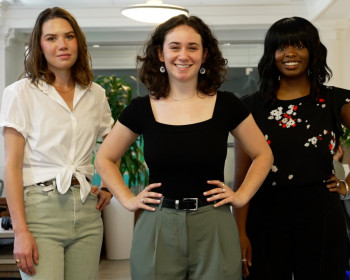Computer Science professor receives grant to increase access to emerging field
Associate Professor of Computer Science Jens Mache received supplemental funding from the National Science Foundation (NSF) this month to support his work to bring the new field of wireless sensor networks into the undergraduate classroom. To date, Mache’s project has received $112,000 in NSF grants.
Sensor network education is primarily offered at the graduate or professional levels. Since receiving initial NSF funding in 2007, Mache and his colleague Nirupama Bulusu, an assistant professor at Portland State University, have focused on developing exemplary lab exercises, identifying topics that are appropriate, and clarifying prerequisite knowledge and preparatory material. Their approach emphasizes a lab-based, active learning environment for undergraduate students.
A wireless sensor network can create what Scientific American deemed a “macroscope,” a system of small devices that can collaboratively detect events in the physical world, such as temperature, sound, vibration, motion, or pollutants. Named to MIT Technology Review’s list of “10 Emerging Technologies that Will Change the World,” sensor networks have already been used to study seabird nests and redwood groves, as well as in nursing homes and oil tankers. Though each device includes sensing, computing, and communication capabilities, the dimensions of devices can vary from the size of a cell phone to the size of a quarter, and in the future might be as small as a grain of sand.
“In the future, sensor networks will enable the Internet to be more closely connected to the real world of physical objects,” Mache said. “Sensor networks could be used to let farmers know when to water their fields, or to monitor the structural integrity of bridges. Given the impending ubiquity of the technology, it’s imperative that the next generation of computer scientists know how to program and deploy sensor networks.”
In addition, Mache and Bulusu hope that the excitement of hands-on experimentation with perceptive sensor networks will attract a diverse pool of learners who might not otherwise explore computer science, including populations typically underrepresented in computer science studies.
“This grant is allowing us to explore emerging technology with the next generation of scientists and leaders at a much earlier stage of their professional development,” Mache said. “This will advance sensor network education, give Lewis & Clark students a leg up in computer science, and enable students to take this knowledge into other fields including health care and environmental science.”
Public Relations is located in McAfee on the Undergraduate Campus.
MSC: 19
email public@lclark.edu
voice 503-768-7970
Public Relations
Lewis & Clark
615 S. Palatine Hill Road MSC 19
Portland OR 97219

